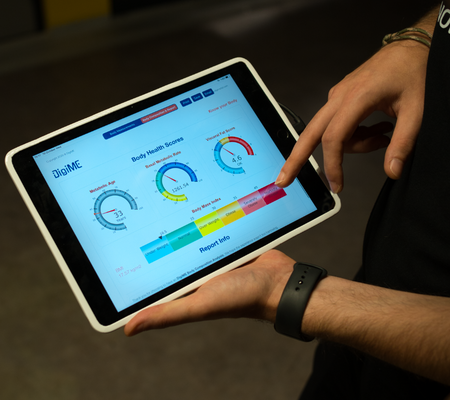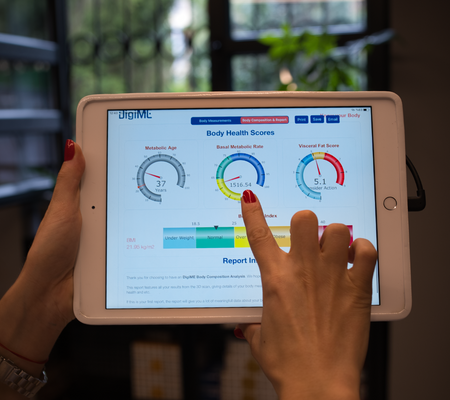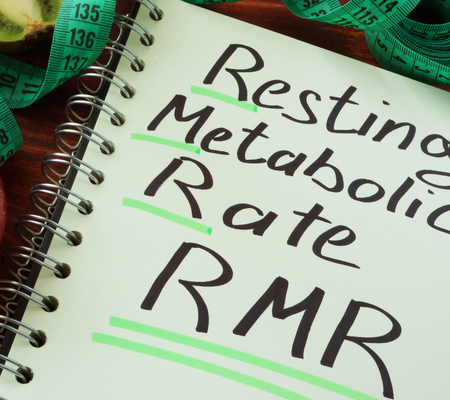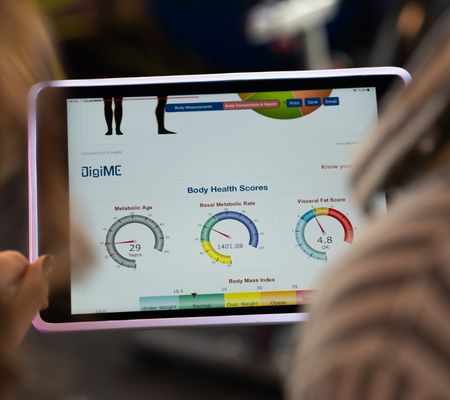What is Body Mass Index?

Body Mass Index (BMI) calculates a person's body fat percentage based on their height and weight. To find out if a person is of normal weight, overweight, underweight, or obese, it is frequently used as a screening tool. BMI is calculated by dividing a person's weight in kilograms by their height in meters squared (BMI = kg/m²).
The standard BMI categories are as follows:
Normal weight: BMI between 18.5 and 24.9
Underweight: BMI below 18.5
Overweight: BMI between 25 and 29.9
Obesity: BMI of 30 or higher
BMI is a useful tool for most adults, but it has its limitations. For example, it does not take into account a person's age, sex, muscle mass, or overall body composition. Therefore, it is possible for a person with a high BMI to be healthy or for a person with a normal BMI to have excess body fat. Let's look into BMI in more detail.
BMI Chart
Here is a BMI chart to help you understand the different BMI categories:
|
BMI |
Category |
|
Below 18.5 |
Underweight |
|
18.5-24.9 |
Normal weight |
|
25-29.9 |
Overweight |
|
30-34.9 |
Obesity class 1 |
|
35-39.9 |
Obesity class 2 |
|
40 and above |
Obesity class 3 |

What is BMI Used for?
Despite its limitations, BMI is a useful tool for determining if a person is underweight, normal weight, overweight, or obese. It is also frequently used to determine a person's risk of acquiring weight-related health issues, such as heart disease, diabetes, and certain cancers, by healthcare professionals, including doctors and nurses.
In addition, the BMI can be used to track alterations in body weight over time. For instance, if a person's BMI drastically rises over time, it may be a sign that they are gaining too much body fat, which could raise their risk of developing health issues.
It's crucial to remember that BMI is only one health indicator and does not account for other elements like muscle mass and body composition or general lifestyle choices. Other evaluations and measurements, such as blood pressure, waist circumference, and blood tests, are frequently used by healthcare professionals to obtain a more precise picture of a patient's health status.
How to Calculate BMI?
BMI is calculated using a simple formula based on a person's height and weight. Here are the steps to calculate your BMI:
1. Convert your weight into kilograms (kg). You can do this by dividing your weight in pounds by 2.2. For example, if you weigh 150 pounds, the calculation would be 150/2.2 = 68.18 kg.
2. Convert your height into meters (m). You can do this by dividing your height in inches by 39.37. For example, if you are 5 feet 6 inches tall, the calculation would be (5 x 12 + 6) / 39.37 = 1.68 m.
3. Square your height in meters. For example, if your height is 1.68 m, the calculation would be 1.68 x 1.68 = 2.82.
4. Divide your weight in kilograms by the square of your height in meters. For example, if your weight is 68.18 kg and your height is 1.68 m, the calculation would be 68.18 / 2.82 = 24.18.
5. Round your BMI to one decimal place.
So in this example, the person's BMI would be 24.2, which falls into the "normal weight" category. Alternatively, you can also use online BMI calculators or charts to quickly determine your BMI.
What is a Healthy BMI for Men and for Women?
A healthy BMI range is the same for men and women and falls within the range of 18.5 to 24.9. This indicates that a person's weight is appropriate for their height.
However, the healthy BMI range for children and adolescents is different as they are still growing and developing. The BMI of children and adolescents is compared to age- and sex-specific growth charts to determine if they are within a healthy weight range.
It's important to remember that BMI is just one indicator of health and doesn't take into account other factors such as muscle mass, body composition, and overall lifestyle.
How Can You Maintain a Healthy BMI?
A balanced diet and consistent exercise are necessary to maintain a healthy BMI. The following tips can assist you in maintaining a healthy BMI:
1. Balanced diet: include plenty of fresh produce, whole grains, lean protein, and healthy fats in your diet. Foods that are processed and heavy in calories should be avoided as they can cause weight gain.
2. Watch your portion sizes: Eating a larger portion may make you gain weight. Use smaller portions and be aware of your body's cues of hunger and fullness.
3. Keep yourself hydrated: By drinking water frequently during the day, it will help you feel full.
4. Exercise frequently: Spend at least 30 minutes each day engaging in regular physical activity, such as brisk walking, cycling, swimming, or dancing. You can maintain a healthy weight and burn calories by doing this.
5. Get enough sleep: Not getting enough might cause hormone disruption and weight gain. Sleep for 7-9 hours every night.
6. Minimize your stress: Staying continuously tense can lead to binge eating and developing obesity. Use stress-reduction methods like yoga, meditation, or deep breathing exercises.
Remember, keeping a healthy BMI involves more than just getting to a certain weight on the scale. It involves maintaining a healthy lifestyle that includes a balanced diet, frequent exercise, and stress reduction to take care of your body.
What Are the Limitations of BMI?
Despite being a popular tool for determining weight status, BMI has several drawbacks that must be taken into account. The following are some BMI limitations:
1. Body composition is not considered by BMI, which only considers weight and height and does not distinguish between muscle mass and fat mass. Accordingly, people with a high percentage of muscle mass, like athletes, may have a high BMI but healthy body composition.
2. BMI may not be acceptable for some populations, including children and adolescents, pregnant women, and older adults, because of potential differences in their body composition and health concerns.
3. It disregards the distribution and location of body fat. Body fat distribution might be a key sign of potential health problems. Even though their BMI is within the normal range, people with extra belly fat may be more susceptible to diabetes and heart disease.
4. BMI is a screening tool and cannot give a comprehensive picture of a person's health risks. As a result, it might not accurately reflect health concerns. It may also be necessary to consider additional aspects, such as family history, lifestyle choices, and medical history.
5. Focusing primarily on BMI can result in body shaming and stigma, which can have detrimental psychological impacts on people. It's critical to tackle weight and health with compassion and holistically.
Overall, BMI should not be used as the only indicator of health risks, even though it can be useful for determining weight status. Based on various variables, a healthcare practitioner can offer a more thorough evaluation of a person's health status.
Conclusion
In conclusion, Body Mass Index (BMI) is a screening tool that measures a person's weight in relation to their height. A healthy BMI falls within the range of 18.5 to 24.9, which indicates that a person's weight is appropriate for their height. However, BMI has limitations, such as not considering body composition, the location of body fat, and certain populations. Maintaining a healthy BMI requires a combination of a healthy diet, regular physical activity, getting enough sleep, and managing stress. While BMI can be useful for assessing weight status, it should not be used as the sole determinant of an individual's health risks. A healthcare professional can provide a more comprehensive assessment of an individual's health status based on multiple factors, including BMI, waist circumference, blood presssure, and blood tests.

 Waist to Hip Ratio: An Important Indicator of Overall Health
Waist to Hip Ratio: An Important Indicator of Overall Health


 It is the daily minimum energy or calorie level when your body is at rest (including sleep) to work effectively. It is the sum of the amount of energy required for significant vital actions such as nerve functions, brain functions, cell renewal and growth, body temperature control, blood circulation, and breathing. The basic metabolic rate is 65-75% of the daily calorie consumption, and the remaining 25-35% is the daily physical activity.
It is the daily minimum energy or calorie level when your body is at rest (including sleep) to work effectively. It is the sum of the amount of energy required for significant vital actions such as nerve functions, brain functions, cell renewal and growth, body temperature control, blood circulation, and breathing. The basic metabolic rate is 65-75% of the daily calorie consumption, and the remaining 25-35% is the daily physical activity.